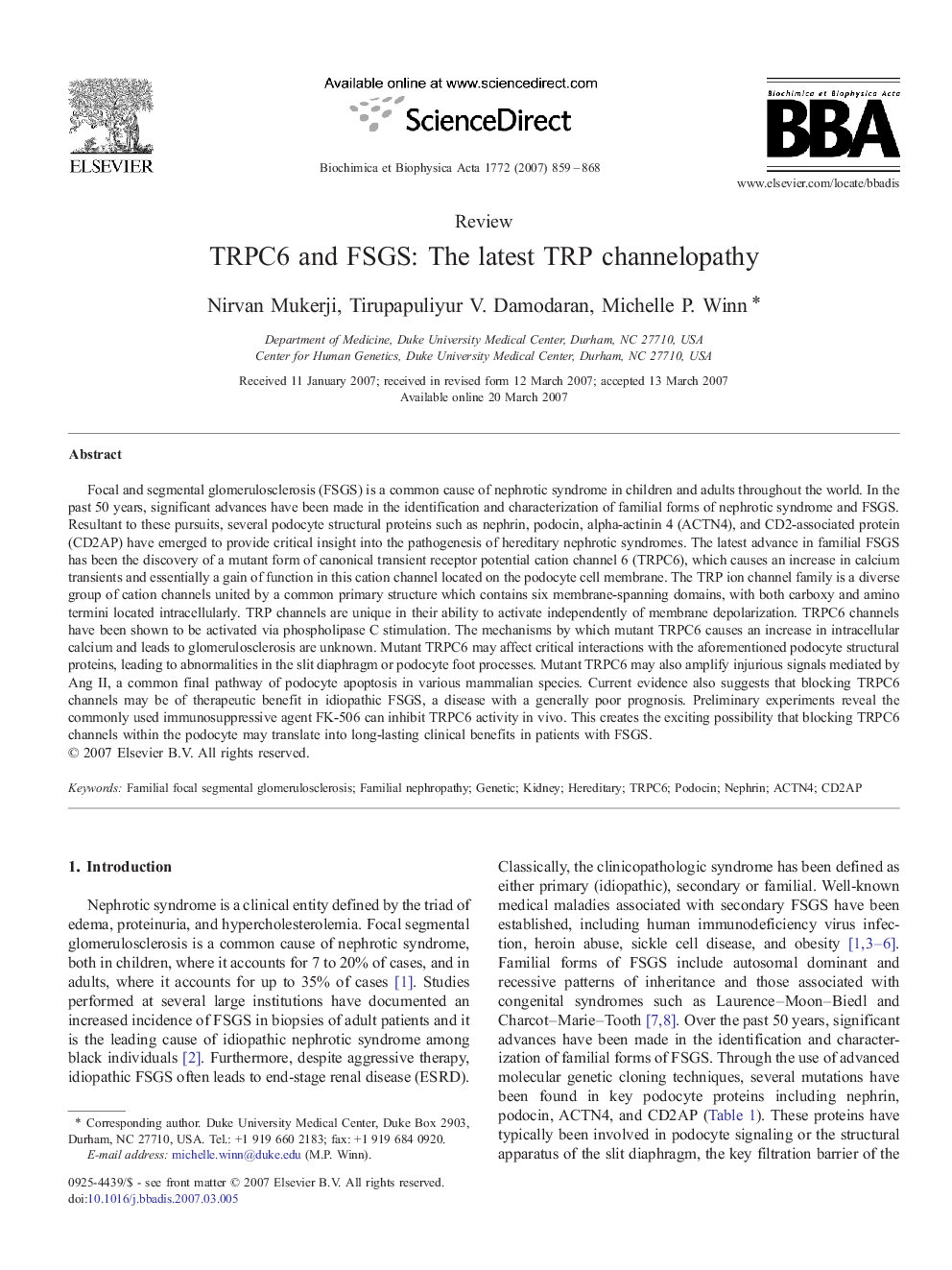| کد مقاله | کد نشریه | سال انتشار | مقاله انگلیسی | نسخه تمام متن |
|---|---|---|---|---|
| 1905781 | 1534738 | 2007 | 10 صفحه PDF | دانلود رایگان |

Focal and segmental glomerulosclerosis (FSGS) is a common cause of nephrotic syndrome in children and adults throughout the world. In the past 50 years, significant advances have been made in the identification and characterization of familial forms of nephrotic syndrome and FSGS. Resultant to these pursuits, several podocyte structural proteins such as nephrin, podocin, alpha-actinin 4 (ACTN4), and CD2-associated protein (CD2AP) have emerged to provide critical insight into the pathogenesis of hereditary nephrotic syndromes. The latest advance in familial FSGS has been the discovery of a mutant form of canonical transient receptor potential cation channel 6 (TRPC6), which causes an increase in calcium transients and essentially a gain of function in this cation channel located on the podocyte cell membrane. The TRP ion channel family is a diverse group of cation channels united by a common primary structure which contains six membrane-spanning domains, with both carboxy and amino termini located intracellularly. TRP channels are unique in their ability to activate independently of membrane depolarization. TRPC6 channels have been shown to be activated via phospholipase C stimulation. The mechanisms by which mutant TRPC6 causes an increase in intracellular calcium and leads to glomerulosclerosis are unknown. Mutant TRPC6 may affect critical interactions with the aforementioned podocyte structural proteins, leading to abnormalities in the slit diaphragm or podocyte foot processes. Mutant TRPC6 may also amplify injurious signals mediated by Ang II, a common final pathway of podocyte apoptosis in various mammalian species. Current evidence also suggests that blocking TRPC6 channels may be of therapeutic benefit in idiopathic FSGS, a disease with a generally poor prognosis. Preliminary experiments reveal the commonly used immunosuppressive agent FK-506 can inhibit TRPC6 activity in vivo. This creates the exciting possibility that blocking TRPC6 channels within the podocyte may translate into long-lasting clinical benefits in patients with FSGS.
Journal: Biochimica et Biophysica Acta (BBA) - Molecular Basis of Disease - Volume 1772, Issue 8, August 2007, Pages 859–868